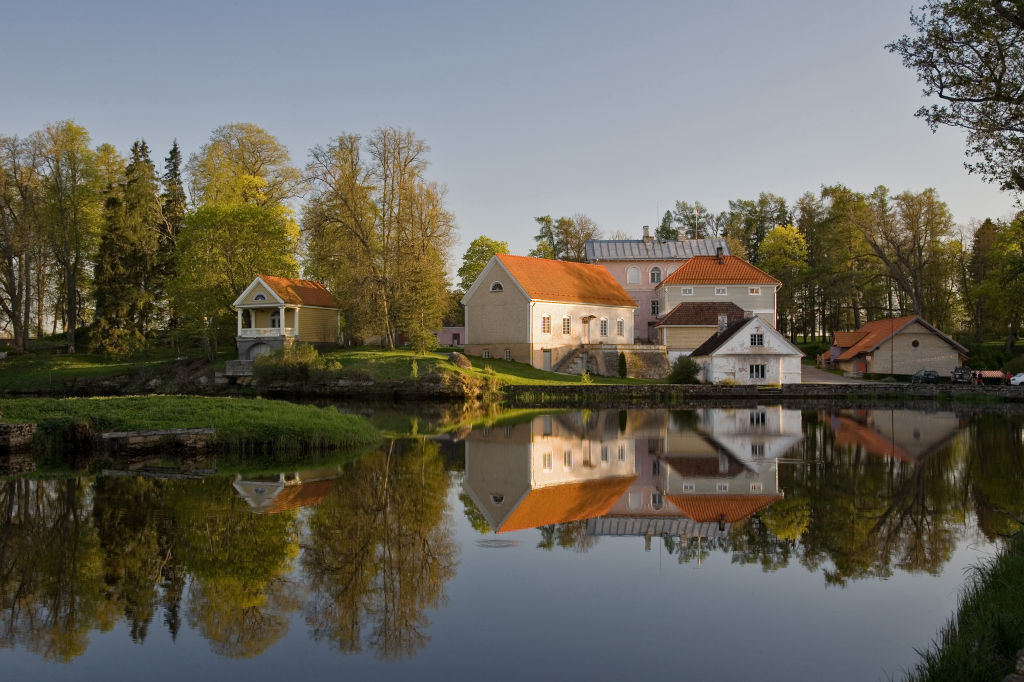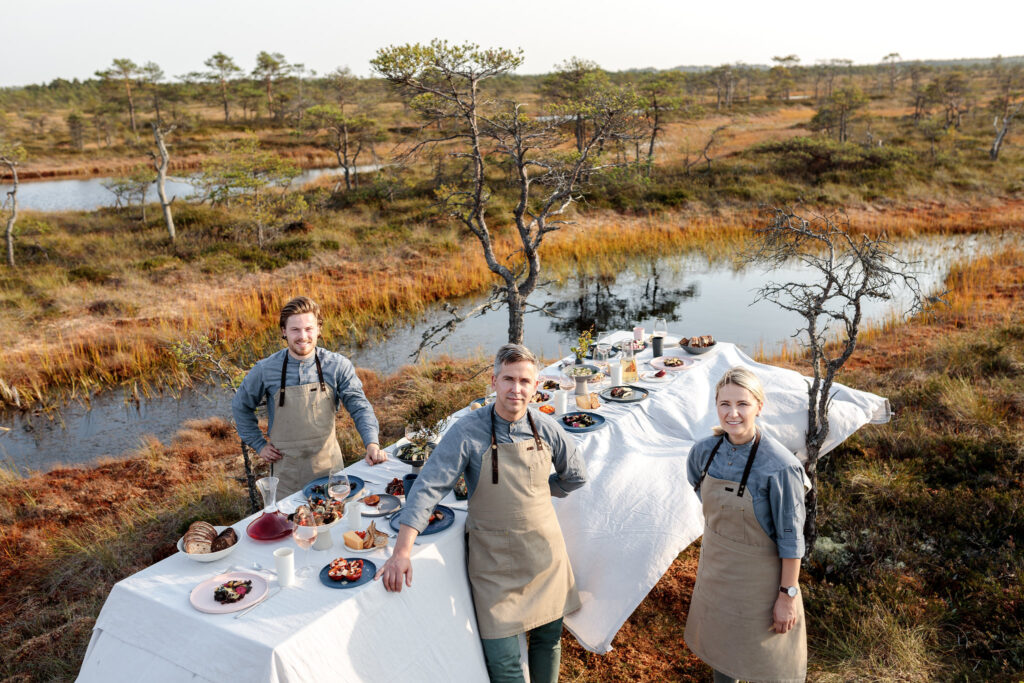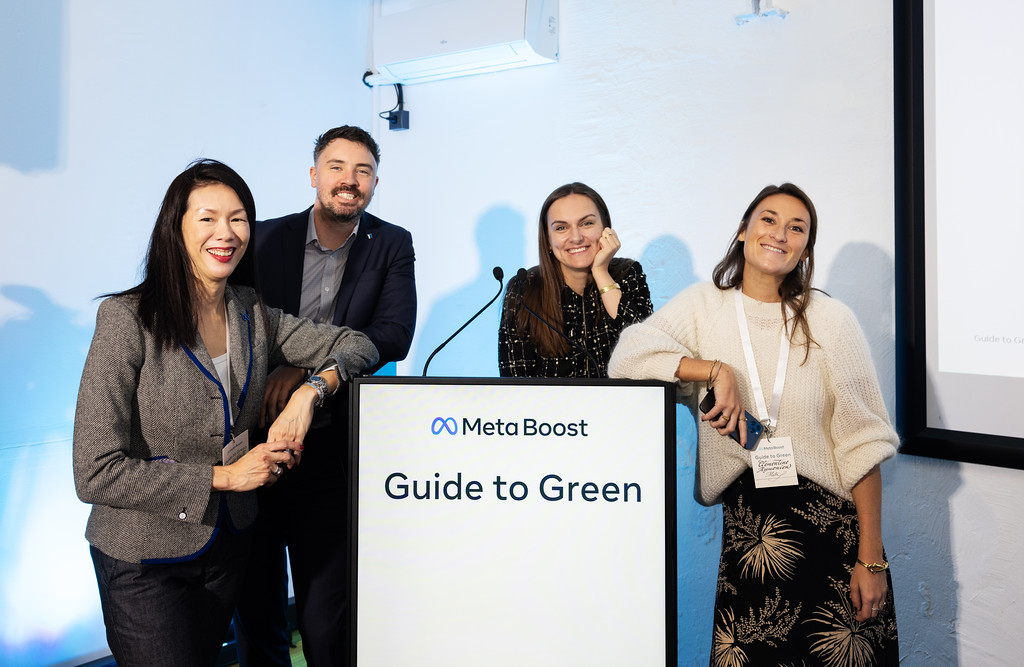TALLINN’S MOST ENVIRONMENTALLY FRIENDLY CONFERENCE HIGHLIGHTED SUSTAINABLE CONFERENCE SOLUTIONS
This October, Tallinn, honoured as the European Green Capital of 2023, hosted the annual Green Destinations conference, dedicated to evaluating and promoting sustainable travel destinations. More than 260 participants from over 40 countries gathered in Estonia to explore sustainable tourism solutions and share their best practices. The conference was organised by Visit Tallinn and Visit Estonia.
Naturally, with a name like Green Destinations, the conference was meticulously organised, with a strong focus on environmental sustainability, thus setting an example for all event organisers. We asked Visit Tallinn’s Project Manager Hele Lõhmus what sustainable solutions were used to minimise the environmental footprint of the event.
Conference venue
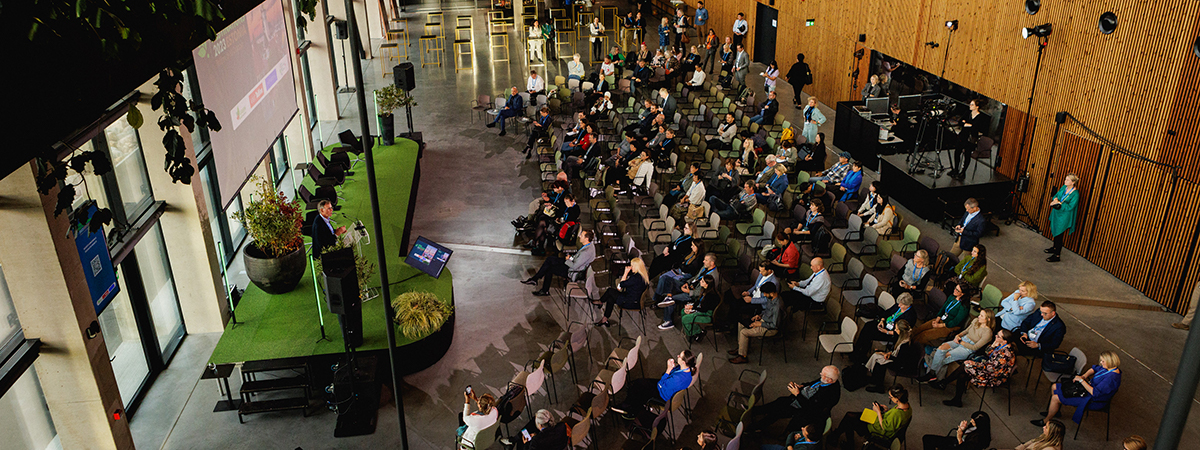
The Port of Tallinn’s Cruise Terminal was chosen as the venue for the conference since it is one of the most environmentally friendly buildings in Tallinn. The Cruise Terminal, which opened in the summer of 2021, was built with a key emphasis on the environment and sustainability. The project was funded through the INTERREG programme Green Cruise Port – Sustainable Development of Cruise Port Locations (2016–2019). As standard practice, green energy is used at the Cruise Terminal. The energy is generated by solar panels adapted to the Nordic climate, and the building is heated/cooled using a heat pump powered by marine energy. The rooms are filled with natural daylight, waste sorting is ensured, and drinking water taps are available for participants. Starting from this summer, the Cruise Terminal also bears the international Green Key eco-label.
Environmentally friendly catering
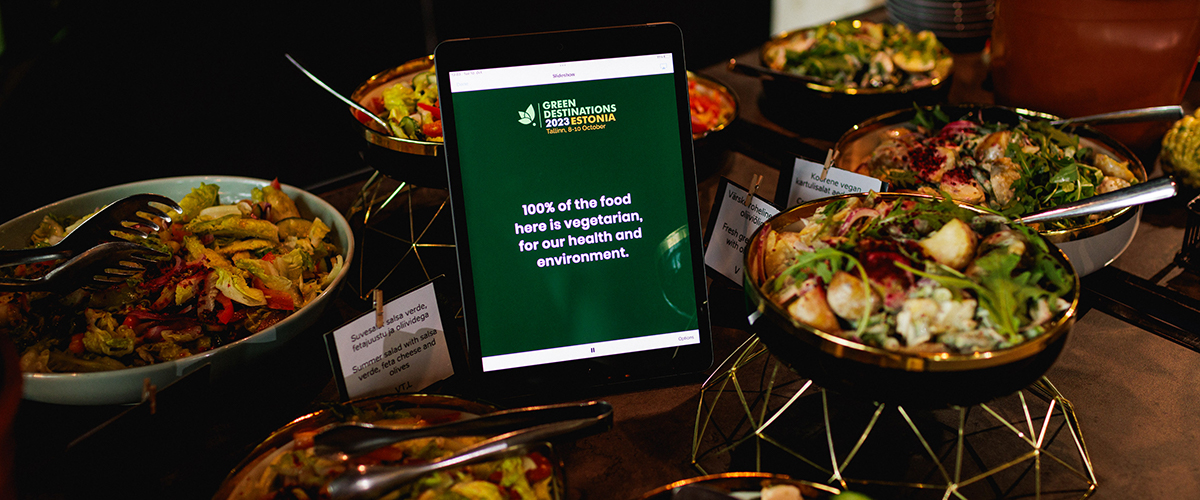
This time, the catering partner was Põhjala Catering. Naturally, great attention was also paid to sustainability in the selection of food and beverages. Offering plant-based food represents the biggest challenge and opportunity in reducing the environmental footprint of catering. Therefore, during the 2-day event, 100% plant-based food was served. At the lunch table, diners were guided by a smart tablet that displayed all information related to the food. Telling the story of Estonia and local food is of significant value to international visitors.
Great attention was also paid to optimising food quantities to reduce waste. The amount of food prepared was approximately 10% less than the number of registered participants. A specific objective was to use local raw materials or organic produce. Delicious and nutritious plant-based dishes, including nettle pesto tagliatelle, chickpea balls with dip sauce, and chanterelle sauce, were served.
The Estonian apples were a big hit, with 35 kg being consumed. For beverages, Fairtrade coffee and tea were offered to demonstrate our commitment to farmers’ rights and equality.
Throughout the event, single-use dishes were not used, unpackaged foods were preferred, and small packaging was avoided. The food surplus was taken away by Fudloop, and the resulting food waste of approximately 7 kg was sorted and recycled.
At the Cruise Terminal, participants had the opportunity to fill their water bottles, which we kindly asked them to bring with them.
The conference dinner was held at the Seaplane Harbour. The environmentally friendly dinner was provided by MARU, the catering provider for the Lennusadam Seaplane Harbour. The same requirements that applied to the daytime caterer were also a prerequisite for MARU catering. However, both 50% fish and 50% poultry were offered at dinner. Visit Tallinn, the client, favoured seasonal, domestic, and organic produce, opting for fair trade-sourced coffee and tea whenever possible. No plastic straws for drinks and aluminium foil for serving were used at the event. We chose to offer a selection of Estonian alcoholic beverages, and a delightful pop-up bar was organised by the gin producer TOHI.
Production of materials was avoided
Do you still remember the time when every attendee was given a conference bag at each conference? Of course, something like that was entirely unsuited for this conference. The only materials produced for the conference were the participants’ lanyards. All printing used ecological and certified paper. All information about the event, both the schedule and the speakers, was available on the conference website and on the venue’s electronic screens. The delegates’ leaflet was downloadable with a QR code. The event was organised as part of the Green Capital programme, and as a result, we reused already existing photo walls.
Room decorations
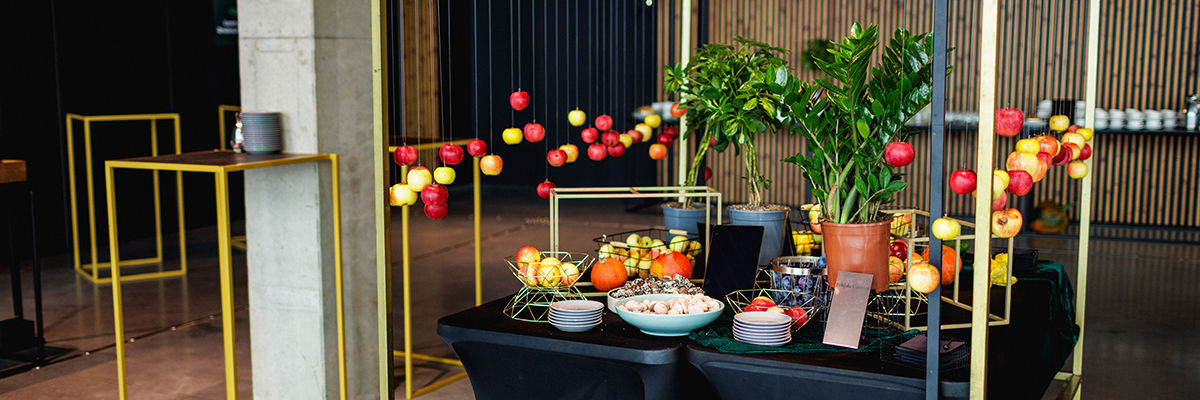
The modernist Nordic-style spaces of the Cruise Terminal did’t require much extra decoration. Only a small number of reusable decorations were used, and no roll-ups or banners were produced.
Sustainable transport choice
Tallinn has been providing free public transport to the delegates of various international events (conferences, cultural and sports events) for several years now. The participants were encouraged to arrive by public transport, bicycle, or walking, and no transfers from hotels were provided. Many participants praised the refreshing morning walk.
Measuring the environmental footprint of the conference
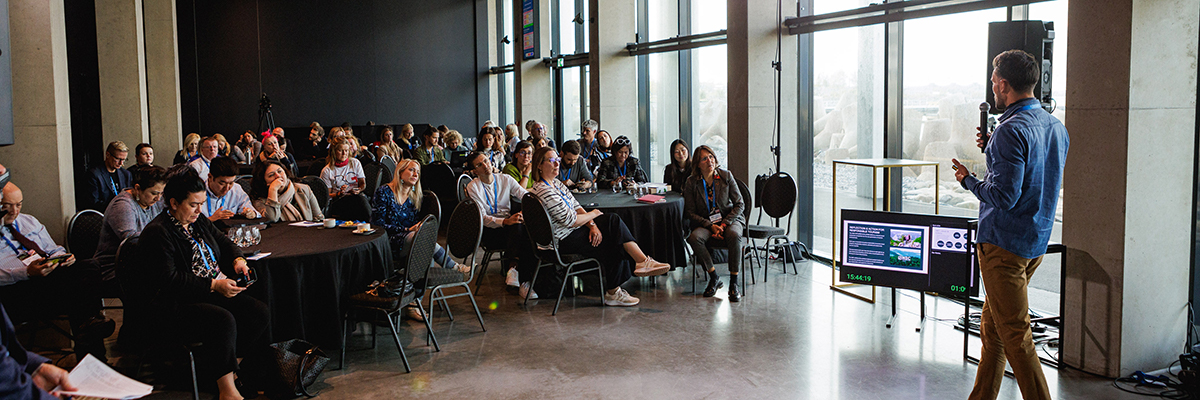
Naturally, the conference also measured the environmental footprint of the event, partnered with Danish company Climatescore. ClimateScore provides a comprehensive life cycle assessment tool that accurately calculates the CO2 impact of both our guests and the event as a whole.
Measuring the event’s environmental footprint involves five key components: transportation (often the largest contributor, encompassing participants, performers, staff, and goods transport), catering (including all food and beverages), energy consumption, materials production and purchase, and waste (usually the smallest contributor), along with water consumption. Transportation is usually the largest contributor to an event’s environmental footprint, accounting for 65–85% of all emissions, particularly since most participants arrive by plane.
The conference achieved an outstanding rating of 9.5 on the ten-point scale for carbon footprint savings, indicating that the conference was essentially organised in the most environmentally friendly manner possible.
Informing participants about sustainable activities
Conference delegates were also informed about the actions being taken to reduce the environmental footprint. This was done using a dedicated application created in Tripdoodler. Conference website information for delegates: https://www.greendestinations.org/gd-2023-estonia/event-sustainability/
Choice of organising partner
The conference was organised with the help of Jolos, an event marketing company that has been working on environmentally sustainable events for several years.
Recommendations to pay attention to
Venue and food are very important influences on the organisation of an environmentally sustainable event. We now have several event venues and hotels certified in Tallinn, which is why there are already several environmental requirements outlined in the contract with the conference venue. When it comes to food, the most sensible approach is to work with the caterer to review the entire menu, taste-test it, and optimise food quantities.
What were the biggest challenges?
The biggest challenge was the audience and how to get them to appreciate the effort involved. This went surprisingly well, the only concerns were the construction work around the Cruise Terminal and the signage, which should have been more abundant.
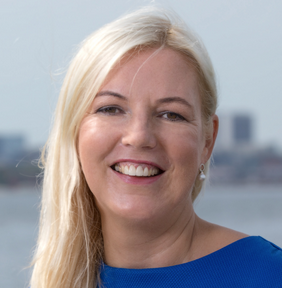
Marketing Manager
Posted: 05.12.2023
Categories: Blog | Conferences
